|
|
 | |  |
 |
Tunisia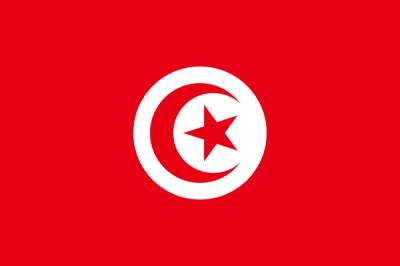
Tunisia
is located on the northeastern tip of Africa, in the center of the
Mediterranean basin, occupies the coastal plain, the eastern part of the
Atlas Mountains and the northern part of the Sahara Desert. In the north and east by the Mediterranean Sea. It shares borders with Algeria and Libya.
The
country is mountainous and thickly covered with greenery in the north
to the south of its terrain is flatter and drier climate. There
are three major regions: the O-Tell, coinciding with the northern,
central Tunisia, consisting mainly of located on the plains of the
steppes and plateaus, ending on the shores of the Sahel, and, finally,
Southern Tunisia, bounded on the north of the salt lakes. This is a large area of desert spaces and luxurious palm groves located near water sources.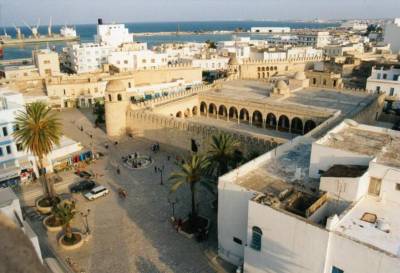
The
highest point in Tunisia, Jebel Shaambi reaches only 1.544 meters above
sea level, and two-thirds of the country - is plain. The coastline of 1,200 kilometers, and if we assume that the island - much more.
The beautiful landscapes of Tunisia served as backdrop for many famous films, including for "Star Wars" and "Indiana Jones".
Tunisia
has absorbed the culture of classical antiquity and the Byzantine
Empire, felt a profound influence of Islamic civilization. History
buffs will find in this country, the ruins of ancient cities,
aqueducts, temples, ancient sculptures, castles and forts, medieval Arab
bazaars and mosques, ethnographic and historical museums, and much
more. Here is the famous Carthage, built by the Phoenicians and later destroyed by the Romans. After the Romans in the land of Tunisia visited the Byzantines, Turks, French, Italians, Germans.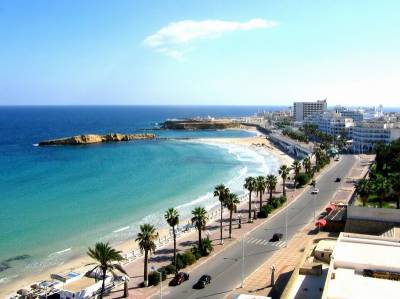
Carthage
Tunisia has received worldwide fame thanks to Carthage. In 814 BC Phoenicians
from Tyre arrived in this country, headed by their Princess Alice and
the king bought the Berbers (indigenous people of Tunisia) piece of land
to build Carthage. The city began to develop rapidly, and soon began to compete with Rome. But in 146 BC during the Punic War it was destroyed by the Romans. The victorious Rome was soon rebuilding of Carthage again, and he is a member of the Roman province of "Africa."Today, Carthage is a suburb of Tunis. Have
survived mostly the remains of Roman buildings - the Capitol, an
amphitheater, grandiose term Aktonina and Byzantine churches. The finds from the ruins of Carthage are stored here in the museum "Lavizheri."
Tunis - the capital and chief port of the country
This town is made up of the medieval part of a colorful Muslim bazaars, modern buildings and port districts. The oldest part of town - the Medina - was founded in the VIII. It
is located around the mosque Oliva (in Arabic - Zeitun), built in 703,
the second earliest monument of Tunisia - cubic domed mausoleum
Harasanidov. The city has many small mosques (built in the twelfth century. And later), there are madrassas and zawiya. Palaces
of the Dar-al-Bey (XVIII c.) And Darboux-Abdallah (XVIII-XIX cc.)
Finished within the multi-colored marble, carved a bang, painting. In the suburban palace of Bardo (XVIII-XIX cc.) Is the national museum, "Allawi". It has the world's largest collection of Roman mosaics. In the palace of Dar-Hussein is a museum of Islamic art.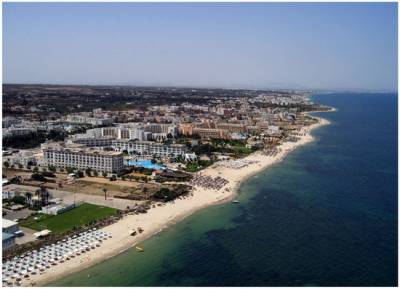
Dougga
At
120 km from the capital can be seen, perhaps the most interesting and
best preserved ancient center of Tunis - the ancient city of Dougga. Dougga - Phoenician (IV c. BC. E.), Followed by Numidian (II cent. BC. E.) And, finally, the Roman (46 BC. E). City. Here
you can see Punic mausoleum, a monument erected in honor of the three
gods - Jupiter, Juno and Minerva, the goddess of the temple of Juno
Celeste, Roman bath, a triumphal arch, and other ancient structures. Particular impressive broad arcs of stone steps to the theater three thousand seats.
Sousse
It is believed that the ancient city of Carthage. In Sousse, located on the site was founded in the XI century. BC. Oe. Phoenician city, well preserved city walls (IX cent.) with a 30-meter tower, the Al-Khalifa. Interesting ribat square, the Grand Mosque (built in 850), a mosque Fatata Bu (IX cent.). There is also a museum of archeology and Islamic art. In the vicinity of Sousse are remnants of Phoenician tombs, Roman houses, the Christian catacombs.
Hammamet
This ancient city was founded nearly five centuries ago. It has grown from a small fishing village. Now it is one of the largest resorts in Tunisia equipped. A very interesting old fortress of Medina, located on the beach. It was built in the XV century. to protect the city from the Christians.
Kairouan
Within
the city of Kairouan (founded in 670), the first capital of the Muslim
rulers of Tunisia, attracted the attention of a small stone built arch
"Mosque of the three-door" (866), and Zawiya Sidi al-Gariani (XIV c.)
Outside the city - Sidi Zawiya Sahba and five-domed Zawiya Sidi Amar Abbas (XIX c.). The city has a museum of Islamic art.
Bizerte (Tunisia hour drive up) - the old seaport, above which rises the Spanish bastion. Here you can see the area of the Martyrs, a beautiful Moorish house and a fish market. The
city with towering above it extinguished volcano is located under the
protection of the International Fund for Environmental Protection.
In Djerba is the oldest synagogue. It was built in the VI. BC Today, Djerba - a beautiful resort that is associated with the continent of ancient Roman road.
In the south of Tunisia's most interesting object - Matmata. In its surroundings you can see the many underground dwellings built Berbers. In most of these caves, dug to a depth of 10 m, are still inhabited.
In
916 was founded in Mahdia survived the Great Mosque, the ruins of the
palace and the arsenal, the lock Burj-al-Kebir (XVI c.) With three
bastions.
Safetula - the ruins of the Roman and Byzantine town, near the present Sbeitla. In
Safetule can see the remains of the Roman Forum and the Capitol with
the temples of Jupiter, Juno and Minerva, Byzantine churches.
Tunisia called the pearl of a lovely blue and white Arabic village of Sidi Bou Said. It is located a stone's throw from Carthage, and a meeting place for artists. Unparalleled views of the Gulf of Tunis, attracts many tourists.
Utica
- one of the first Phoenician colonies (1101 BC), the remains of Roman
houses, an amphitheater, a term; Phoenician cemetery.
Fisdrus City, now of El Jem, is located halfway between Sousse and Sfax. It remained perfectly oval (148h122 m) Coliseum Building, enclosed by three tiers arcades (height - 36 m).
In Tozeur, near the 5-star hotel "Dar Chraiet", the Museum of "1001 Nights" - Arabic Disneyland.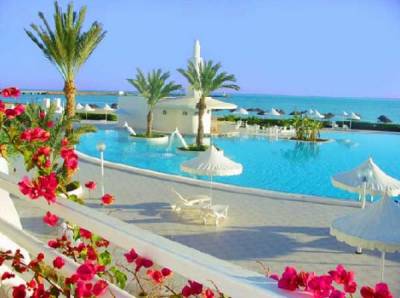
Tips for travelers: In resort areas tourists can easily dress up, prefer comfortable shorts. Calmly walk behind a person if he is on his knees, prays. Do not treat women closely veiled. Do not take pictures without their permission. Do not take photos as objects with a national flag, the presidential suite, the police. Do not drink on the streets of beer cans or wine bottles. Do not talk loud and do not make noisy scenes in the streets and in hotels. In the hotels and shops made shake, even if you do not know. You can greet a stranger or a stranger in any language. You also understand and answer the greeting. It is considered impolite to face-eating man, is on the move or standing. Do not take to the beach money and valuables. Take a bit of trivia for the purchase of drinks. You go swimming, and your bag and belongings will be unattended. And they can "tune" "traders" souvenirs and fruit, which, unfortunately, sometimes appearing on the beach. Do not change the currency on the beach. You can fool the one who has "deft hands." Do not buy fruit at the beach. They are very expensive and may not be well washed. The hotel bars on the beaches. Leaving the beach, collect all the garbage in a bag and carried him to the nearest trash can. Try to stay in the shade from 11.00 to 15.00. The sun is deceptive, you can get burned for some 30 minutes. So try to tan gradually, sunbathing in the morning and afternoon. We recommend always to use various creams for tanning in each hotel a great choice. The
best place for shopping - bazaars, which sell everything: leather and
olive wood, gold and silver, copper and bronze, carpets, clothes, shoes
and art dealer. In the market, market, shop in the artisan can and should haggle. Remember that the first price you would call a merchant, may differ from the price at which you conspired 5-10 times! So advice: stick to its price at which you would have bought a souvenir. In
shops and stores, where prices are clearly indicated (this applies to
all modern boutiques in the capital, most of the shops in Hammamet,
Nabeul, Sousse) should not be traded: the commodity and its price to
you, you decide yes or no. Shops are open daily (except Sunday) from 9.00 to 19.00. Lunch is usually from 12.00 to 14.00. Tap water to drink is not recommended. To
avoid stomach upset, do not brush your teeth with tap water (buy
bottled mineral water), wash the fruit thoroughly, it is best boiled
water, clean from the skin. The
epidemiological situation in Tunisia is relatively quiet, but before
you go, it is advisable to be vaccinated against yellow fever and
malaria.
|  |
 | |  |
|
| Statistics |
Total online: 1 Guests: 1 Users: 0 |
|





